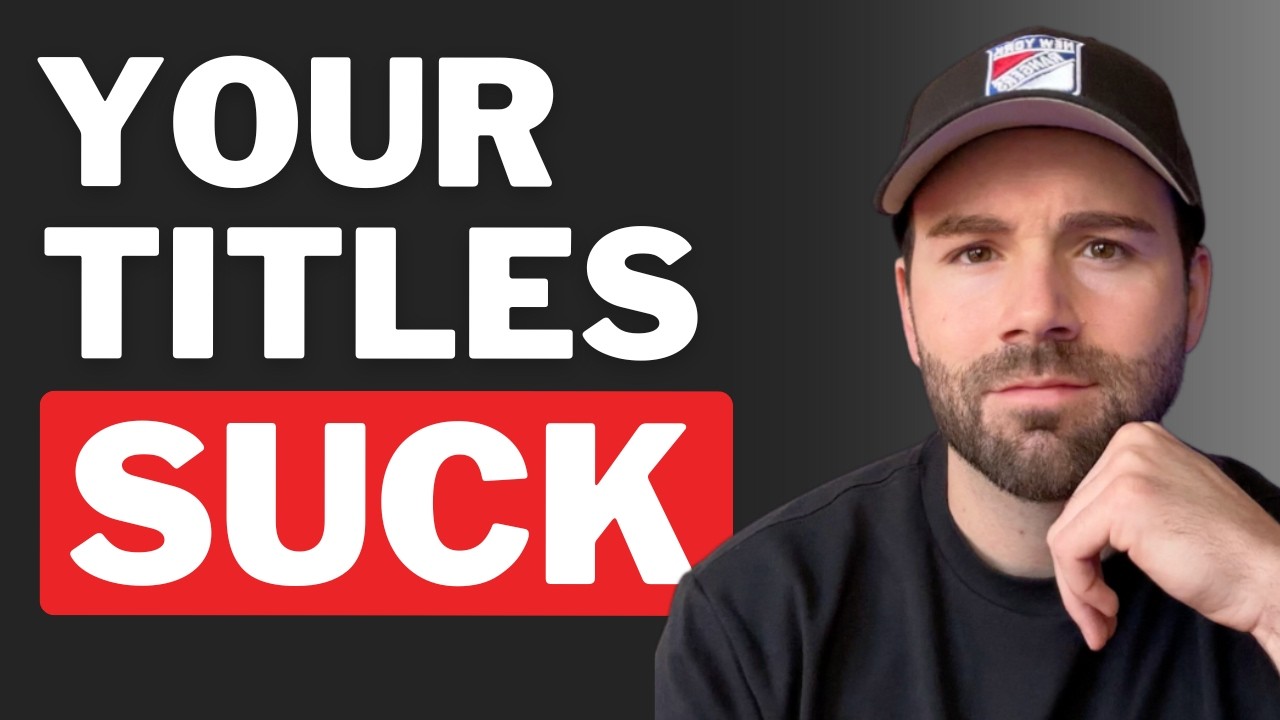The video explains that crafting emotionally charged, curiosity-driven titles using techniques like open loops and power words is essential to capture viewers’ attention and increase YouTube views, as titles influence split-second decisions more than content quality. It also advises keeping titles concise and tailored to either browsing or searching audiences, emphasizing the importance of creating the title before filming to align content with viewer expectations.
The video emphasizes that the primary reason many YouTubers struggle to get views is not the quality of their content but the way they write their video titles. Titles are crucial because viewers make split-second, emotional decisions when scrolling through YouTube, rather than logical evaluations. A title must evoke an emotional reaction to make viewers stop scrolling and click, as content only matters after the click. The core principle is that emotion drives action, and titles should be crafted to trigger emotions rather than just describe the video.
One of the most effective tactics to create engaging titles is using open loops, which spark curiosity by hinting at something without revealing the full story. Open loops create a psychological tension that viewers want to resolve by clicking on the video. For example, a title like “This one mistake killed my channel” invites questions and intrigue, whereas a fully descriptive title like “Getting a copyright strike killed my channel” removes curiosity and reduces clicks. Open loops leverage the brain’s natural desire for closure, making them powerful tools for increasing views.
The video also highlights five key emotional triggers that successful titles use: curiosity, fear or urgency, desire for reward, surprise or novelty, and FOMO (fear of missing out). Incorporating power words such as “warning,” “hidden,” or “secret” can amplify these emotions and make titles more compelling. The stronger the emotional charge a title carries, the more likely it is to drive clicks. Creators are encouraged to ensure their titles evoke emotion because without it, there is no viewer action and no views.
Another important factor is the 55-character rule, which advises keeping titles concise and frontloading them with the most impactful keywords. Since YouTube often truncates longer titles, especially on mobile devices where most views come from, placing the emotional hook or key phrase at the beginning ensures it remains visible and effective. Shorter titles are easier to read quickly, making them more suitable for the fast-scrolling behavior of viewers on the platform.
Finally, the video distinguishes between browse-based and search-based titles, explaining that each requires a different approach. Browse-based titles aim to interrupt casual scrolling with curiosity and emotional triggers, while search-based titles focus on clarity, keywords, and SEO to attract viewers actively searching for specific content. The creator also stresses the importance of writing the title before filming, as the title and thumbnail are the “product” that sells the video. Starting with a strong title ensures the content is aligned to deliver on the promise, maximizing the video’s potential to attract and retain viewers.
